Citizen science is rapidly becoming an invaluable tool in conservation. With technology providing new and interactive ways for anyone to contribute to conservation work from anywhere in the world, and on their own schedule, more conservationists than ever are turning to mobile apps and crowdsourced data analysis to speed up their projects and strengthen their data.
Similarly, more affordable and accessible tools like Audiomoth have opened the door for people to get involved in massive data collection efforts like the Silent Cities project, giving a glimpse into how our wider understanding of nature and conservation could be transformed as technology becomes increasingly user-friendly.
This group is your place for all things related to citizen science. Whether you're looking to get involved in a new conservation tech project, you're thinking of launching your own citizen science-powered project, you'd like to discuss capacity building and how citizen science can empower local communities, or you want to share a great resource or project you've found, this group will help you connect with others who are excited about making conservation tech accessible and effective!
To learn more about citizen science, check out this 2020 WILDLABS feature on Zooniverse projects.
No showcases have been added to this group yet.
WILDLABS & Wildlife Conservation Society (WCS)
I'm the Bioacoustics Research Analyst at WILDLABS. I'm a marine biologist with particular interest in the acoustics behavior of cetaceans. I'm also a backend web developer, hoping to use technology to improve wildlife conservation efforts.





- 41 Resources
- 38 Discussions
- 33 Groups
- @HeinrichS
- | he/him
Conservation tech geek, custodian (some say owner) and passionate protector of African wildlife, business systems analyst.





- 0 Resources
- 29 Discussions
- 6 Groups
- @lawaii
- | he/him
Hi, I’m Lawaii, Mother Earth’s son. A biodiversity activist and conservation strategist walking alongside the small islands of the Sundaland Bio-ecoregion Hotspot
- 0 Resources
- 0 Discussions
- 5 Groups
- @carlybatist
- | she/her
ecoacoustics, biodiversity monitoring, nature tech



- 113 Resources
- 361 Discussions
- 19 Groups
- @jsulloa
- | He/Him
Instituto Humboldt & Red Ecoacústica Colombiana
Scientist and engineer developing smart tools for ecology and biodiversity conservation.



- 3 Resources
- 22 Discussions
- 7 Groups
- @TaliaSpeaker
- | She/her
WILDLABS & World Wide Fund for Nature/ World Wildlife Fund (WWF)
I'm the Executive Manager of WILDLABS at WWF



- 23 Resources
- 64 Discussions
- 31 Groups
- @CourtneyShuert
- | she/her
I am a behavioural ecologist and eco-physiologist interested in individual differences in marine mammals and other predators



- 0 Resources
- 12 Discussions
- 10 Groups
Aeracoop & Dronecoria
Computer engineer, Drone Pilot, Seed researcher, Wild Tech Maker





- 3 Resources
- 37 Discussions
- 11 Groups
- @joemuise
- | He/Him
I am a high school physics teacher who is always looking for interesting ways to engage students. This sometimes spills over to other fields where I can find applications of physics. I am currently working with a scientist on wavelength-specific light interactions with insects


- 0 Resources
- 4 Discussions
- 5 Groups
- 0 Resources
- 0 Discussions
- 10 Groups
- 0 Resources
- 0 Discussions
- 10 Groups
Monitoring and Evidence Manager, Kent Wildlife Trust


- 0 Resources
- 1 Discussions
- 6 Groups
Rainforest Foundation UK is looking for a FullStack developer with an interest in environmental justice and the development of rainforest monitoring systems
6 December 2022
Opinion paper describing "how data acquired from remote sensing, citizen science & other monitoring approaches could feed in near-real time to an early warning system for biodiversity that integrates automated red-...
7 November 2022
Adventure Scientists is looking for an experienced online community administrator to manage a digital meeting-place for our scientists and adventurers, internally referred to as “The Platform.”
11 October 2022
"We develop the use of benthic species as animal oceanographers by combining archival (depth, temperature) data from animal-borne tags, passive acoustic telemetry & citizen-science mark-recapture records for the...
10 October 2022
This paper released by the World Economic Forum and the SPACES coalition shows how businesses can embrace the use of spatial intelligence for action on nature and climate. How can we make sure businesses apply the...
23 September 2022
This came to me by way of my dad over the weekend, but it's is full of familiar names and has started popping up from other places in the conservation tech network. It's a gorgeous visual story via The Sydney Morning...
8 August 2022
Article
Ceres Tag sends just in time alerts and GPS location to have the power to track and trace.
22 July 2022
The Pl@ntNet team is looking for a data scientist with strong skills in python and pytorch development. Pl@ntNet is a citizen observatory of plant biodiversity & research platform at the crossroads of data science,...
7 July 2022
Article
Michael and Maria Parsons recently purchased a substantial 165 acre lot of land in Far North Queensland, Australia. Entirely covered by tropical rainforest, it is contiguous with the Daintree World Heritage Area and...
11 May 2022
In this thought piece from Whale Seeker, Malcolm Kennedy considers the strengths of weaknesses of citizen science and AI, both used to analyze large amounts of conservation data, and discusses the importance of data...
19 August 2021
The latest Technology Quarterly special issue from The Economist highlights the theme of protecting biodiversity, and covers topics including climate change's impacts on biodiversity, modelling ecosystems, using...
17 June 2021
WILDLABS member Meredith Palmer shared this great course module based around Snapshot Serengeti camera trap data, and developed for university biology courses. This material is ideal for introductory level biology...
25 November 2020
September 2025
event
event
July 2025
28 Products
3 R&D Projects
30 Organisations
Recently updated products
Recently updated R&D Projects
Recently updated organisations
| Description | Activity | Replies | Groups | Updated |
|---|---|---|---|---|
| want to join 2025 contest for humpback whale photos in Juneo Alaska of Kelp |
|
Citizen Science, Conservation Tech Training and Education, Drones, Emerging Tech, Geospatial, Human-Wildlife Coexistence, Marine Conservation, Open Source Solutions | 9 hours 40 minutes ago | |
| Hi Olivier,Yes, I am somewhat familiar with GloBI and would love to chat as wellBest,Navodita |
|
Citizen Science | 1 week 5 days ago | |
| Good question. Not sure everyone recommends ArcGIS anymore, but it is commonly used as a desktop GIS. However, it's not free. QGIS, R, and various Python packages are free. But... |
|
Citizen Science, Geospatial, Human-Wildlife Coexistence | 2 weeks 3 days ago | |
| Do you know a nonprofit or organization that is looking to work with students passionate about the environment? Code the Change... |
|
AI for Conservation, Citizen Science, Conservation Tech Training and Education, Open Source Solutions, Software Development | 1 month 1 week ago | |
| Play FathomVerse: App Store | Google Play Join the Community: Discord | Instagram | TikTok | LinkedInStay up-to-date: ... |
|
Marine Conservation, AI for Conservation, Citizen Science | 4 months 2 weeks ago | |
| I create ocean exploration and marine life content on YouTube, whether it be recording nautilus on BRUVs, swimming with endangered bowmouth... |
|
Acoustics, AI for Conservation, Animal Movement, Camera Traps, Citizen Science, Drones, Emerging Tech, Marine Conservation, Sensors, Sustainable Fishing Challenges, Wildlife Crime | 1 month 2 weeks ago | |
| Thank you for your reply, ChadI meant 10 as a whole, indeed. Perhaps you see your post in one group, but since it is tagged for all groups, I assumed you meant 10 in total.In your... |
|
Acoustics, AI for Conservation, Animal Movement, Camera Traps, Citizen Science, Climate Change, Community Base, Connectivity, Drones, eDNA & Genomics, Emerging Tech, Funding and Finance, Geospatial, Human-Wildlife Coexistence, Software Development, Wildlife Crime | 1 month 3 weeks ago | |
| Thanks Fadhilla! I met with your colleague Henrick at the booth. :-) |
|
AI for Conservation, Animal Movement, Camera Traps, Citizen Science, Community Base, Data management and processing tools, Early Career, Geospatial | 1 month 3 weeks ago | |
| Thank you for your comment Chris! Using these tools has made a huge difference in the way we can monitor and manage Invasive Alien Vegetation. I hope you are able to integrate... |
|
AI for Conservation, Citizen Science, Conservation Tech Training and Education, Drones, Geospatial, Human-Wildlife Coexistence, Open Source Solutions | 1 month 3 weeks ago | |
| My first thought was that these were bird photos and eBird would automatically populate your checklist, but now I see these are habitat photos! That is very cool ... eBiome! From... |
|
Citizen Science | 2 months 2 weeks ago | |
| Hi all! I recently did a little case study using RGB drone data and machine learning to quantify plant health in strawberries. I wanted to... |
|
Citizen Science, Conservation Tech Training and Education, Drones, Geospatial | 3 months ago | |
| Wow! That's awesome! Thanks for sharing! |
|
Citizen Science | 3 months 1 week ago |
Updates on Mole-Rat Mystery Drone Project
10 June 2025 10:21am
12 June 2025 11:33am
Thank you Elsa :)
14 August 2025 6:07am
want to join 2025 contest for humpback whale photos in Juneo Alaska of Kelp
Tech4Nature Presents: 2025 Innovation Challenge Workshop Series - Registration Now Open!
6 August 2025 5:09pm
Tech4Nature Presents: 2025 Innovation Challenge Workshop Series - Registration Now Open!
6 August 2025 5:09pm
Collaborate on Conservation Tech Publications With HAAG
5 August 2025 11:46pm
Graph of life platform
31 July 2025 5:09pm
1 August 2025 2:30pm
2 August 2025 12:14am
Hi Olivier,
Yes, I am somewhat familiar with GloBI and would love to chat as well
Best,
Navodita
July Geospatial Café Q&A
25 July 2025 5:53pm
25 July 2025 5:57pm
- I have question. As Dr Muhammad Rais mentioned ArcGis and QGIS for spatial analysis, map creating etc. If we can also done these analysis with python such as spatial analysis etc and sp, sf function in R for spatial analysis. So why everyone recommend ArcGis. And 2nd question about map of life. Can we download data from that for spatial analysis or habitat modeling.
25 July 2025 5:58pm
- Lovely to hear your work curating the Map of life @eliseb227. When uploading shapefiles, is it accurate to create a list of exhaustive species identified within a landscape which could see incidents of conflict. can we include community knowledge in this list?
28 July 2025 7:43am
Good question. Not sure everyone recommends ArcGIS anymore, but it is commonly used as a desktop GIS. However, it's not free. QGIS, R, and various Python packages are free. But you just need to know how to code to use them. In fact, using R and Python is often cleaner, faster, and puts you in touch with the data and how it's analyzed, much better than the 'clicky clicky' used in desktop packages. Most will use both desktop and code in the workflows. Among others, please see geemap.org, leafmap.org, and FOS geospatial tools for resources to get started and for a deeper dive. Additionally, please see the articles and discussions in this group.
Executive Director for the Open Science Hardware Foundation
19 July 2025 2:15pm
Tech for Impact Collaboration
2 July 2025 3:41am
🌊 FathomVerse mobile game debuts new features to help gamers participate in ocean exploration
27 March 2025 1:20am
27 March 2025 1:27am
Play FathomVerse: App Store | Google Play
Join the Community: Discord | Instagram | TikTok | LinkedIn
Stay up-to-date: Subscribe to our Newsletter
Contact us: fathomverse@mbari.org
Learn more: www.fathomverse.game
July 1 is Open Science Hardware Day!
30 June 2025 10:40am
30 June 2025 10:45am
I WANT TO TELL YOUR STORY
29 June 2025 10:22am
Opportunity to participate in study on what evidence you trust in conservation
24 June 2025 1:14pm
New Group Proposal: Systems Builders & PACIM Designers
18 June 2025 2:52pm
19 June 2025 9:08am
Hi Chad,
Thanks for the text. As I read it, PACIMs play a role in something else/bigger, but it doesn't explain what PACIMs are or what they look like. Now I've re-read your original post, I'm thinking, maybe I do understand, but then I feel the concept is too big ( an entire system can be part of a PACIM ? ) to get going within a WildLabs group. And you want to develop 10 PACIMS within a year through this group? Don't get me wrong, I am all for some systems change, but perhaps you're aiming too high.
19 June 2025 12:19pm
Hello again sir - PACIMs really mean 'projects' is the way I see it. Each part of the acronym can be seen as a project (if you have an assignment to do, you have a project really).
As for your query on 10 projects in 'this' group - I should ask for clarification if you mean particularly acoustics or in any group (I see now this is the acoustics thread after I selected all the groups for this post). If you are asking on acoustics, you're right - I am unsure on 10 as I am not too keen on acoustics yet. If you are asking 10 projects as a whole like 10 projects in the funding and finance group - I believe 10 to be a very reasonable number. Our projects we have co-created are for the most part replicable, rapidly deployable, quickly scalable, fundable through blended finance and more.
Thank you again for the feedback.
19 June 2025 1:43pm
Thank you for your reply, Chad
I meant 10 as a whole, indeed. Perhaps you see your post in one group, but since it is tagged for all groups, I assumed you meant 10 in total.
In your first post you explain PACIM stands for "Projects, Assignments, Campaigns, Initiatives, Movements, and Systems", so I understood it as more than just projects. Obviously, many things can be packed into a project or called a project, but then, what does it mean that 'Projects' is part of the list?
Well, if you think 10 projects is doable, then don't let me stop you.
Opportunity to participate in study on what counts as evidence in conservation
19 June 2025 11:11am
ICCB 2025 – Let’s Connect!
9 March 2025 5:06am
16 June 2025 8:33am
Hey Stephanie,
I have dropped you couple of links. I believe we also have a booth somewhere.
16 June 2025 8:41am
Hi Stephanie,
It’s great to hear about your exciting work and that you’ll be attending ICCB 2025 — congratulations on presenting!
The Savannah Tracking team is participating at the exhibition, and we’d love for you to stop by our booth 15.
Given your previous interest in collaring domestic dogs and collecting high-resolution GPS data, it might be a great opportunity for us to connect in person and dive deeper into how our lightweight collar solutions — like those currently deployed on Dingoes — could support your project. We'd be happy to show you how our satellite-enabled collars work, demo our data platforms, and explore a potential fit for your needs.
19 June 2025 7:34am
Thanks Fadhilla! I met with your colleague Henrick at the booth. :-)
How drones, AI & Open Source Software are being used to combat Alien Invasive Plants in South Africa
2 June 2025 10:08am
7 June 2025 9:36pm
Hi Ginevra, thank you! Its such a huge advantage to have tech tools available to us in conservation. Not just from an analysis point of view but also from a practical application view😊
17 June 2025 1:26am
Aloha, this is a great project. Thanks for sharing. I have been looking for ideas to integrate machine learning with some of the conservation work we are engaed in here on Kauai. Thank you
17 June 2025 11:00am
Thank you for your comment Chris! Using these tools has made a huge difference in the way we can monitor and manage Invasive Alien Vegetation. I hope you are able to integrate similar systems with your projects there. If you need any help, feel free to reach out!
A crazy new feature on eBird - Uploading media at the list level
23 May 2025 10:26am
27 May 2025 7:50am
Thanks for the heads up, Adrien. I've put my birdwatching on hold but will reboot it again this summer and start using eBird.
30 May 2025 3:17pm
My first thought was that these were bird photos and eBird would automatically populate your checklist, but now I see these are habitat photos! That is very cool ... eBiome! From the website:
Habitat photos hold tremendous promise for improving bird occurrence models and understanding long-term changes to habitat conditions. We encourage users to document habitats during their visits and continue tracking changes over time. Tagging observed species in habitat photos may help reveal important connections between birds and their environments. These can also offer finer-scale insights that improve our approaches to assessing habitats, which currently relies on satellite imagery.
Soundscape recordings hold similar promise, capturing the broader soundscape of a site and how it may change. They will also play a key role in training Merlin Sound ID to recognize individual species within busy dawn choruses and environmental recordings.
Can RGB drone data & Machine Learning be of value in Conservation?
14 May 2025 12:52pm
Technology in Wildlife Welfare Workshop (in-person, UK)
6 May 2025 7:46pm
iNaturalist tips & tricks?
28 April 2025 5:33am
2 May 2025 3:43pm
I'm new to iNaturalist but I did a personal project recently that made use of it's awesome API.
I used it to fetch only research-grade, open-location spider sightings, then performed a spatial join with Wildlife Trust regional boundary data (via an ArcGIS REST service) using GeoPandas. I visualised the results on an interactive Folium map with clustering, and set up a Prefect workflow to keep the data updated monthly. Final outputs include a clean CSV for analysis and the live map. You can see the project here
GitHub - mgadhvi/spider-project: This project uses iNaturalist spider sightings and Wildlife Trust boundary data to create an interactive map, helping visitors identify spider species they might encounter in different Wildlife Trust regions across the UK.
This project uses iNaturalist spider sightings and Wildlife Trust boundary data to create an interactive map, helping visitors identify spider species they might encounter in different Wildlife Trust regions across the UK. - mgadhvi/spider-project
Coming from a developer looking to change to nature tech, I found it a well document and easy API to work with :)
6 May 2025 6:34am
Wow! That's awesome! Thanks for sharing!
A broken discussion thread ?
2 April 2025 1:50pm
2 April 2025 1:52pm
Ah in the meantime my mail box is functional again. But this thread still seems broken.
2 April 2025 2:17pm
Hi Kim, thanks for flagging this. It's likely caused by a bad external link. We will investigate!
2 April 2025 2:52pm
Hi Kim, the website linked in the body text of the post was not working with our link preview embed system and somehow causing a crash. Clearing the site cache and changing the embed link to a hyperlink instead of a link preview embed has seemingly fixed the issue for now.
The devs will investigate further what was causing this to try and stop this happening again.
Thanks for the report!
Nature Tech Unconference - Anyone attending?
8 March 2025 12:11pm
15 March 2025 8:28am
Definitely!
21 March 2025 12:07pm
The Futures Wild team will be there :)
26 March 2025 7:54pm
Yep see you on friday
United Nations Open Source Principles
13 March 2025 4:13pm
25 March 2025 11:54am
All sound, would be nice if there were only 5, though!
Mole-Rat Mystery. Can anyone help?
19 March 2025 3:25pm
20 March 2025 4:17pm
Hi Sean! I love that you are naturally curious and are pursuing really cool projects in your free time. I know absolutely nothing about cape dune mole rats (in fact, never heard of them prior to this post, but I will confess I was interested in the concept of a mole-rat mystery), but I did have some thoughts about where you might find more information-
It seems like the types of questions you are asking are pretty specific and niche. My first thought on how to find someone with expertise in these specific rodents was to go to their iNat page- there you can see the top observer and top identifier. Both individuals are active researchers, so I think reaching out to them on iNat or finding their e-mails from their respective organizations' sites might be a good way to get in touch.
I also did a quick search in Google Scholar in which I typed in only the scientific name and hit go. The two publications linked above caught my eye as potentially helpful in your search- particularly the first one. They excavated burrows and noted things like home range size, that males have more burrows than females, etc. I didn't go much beyond the abstracts but these seem like they might get you on the right tracks!
Happy ratting!
25 March 2025 8:36am
Good morning Vance
Thank you very much! I am looking into some papers that I was kindly directed to by Jocelyn Stalker ( her comment below) and am looking for ways to establish population dynamics just by looking at the mounds. Once I have figured this part out I should be able to correlate the information to the drone data. The Ground Sampling Distance (GSD) for this project is very small, 1.3cm per pixel. This has proven to be very useful because I am able to use the very fine 3D models to run change detections that pick up new heaps and vegetation reductions (which may be due to feeding) on a weekly basis. It helps not only visualise but also quantify where the most activity has occurred. I will keep you posted!
25 March 2025 8:47am
Good morning Jocelyn
Thank you very much for your comment, this is proving to be very useful advice and thank you so much for setting me on the right path!! This is very exciting!!
They are the most extra ordinary little creatures and as I don't know much about them either, I thought I'd try learn as much as I can (not just through literature, but through my own observations as well). I walk past these mounds daily and am always intrigued when I see more mounds and really enjoy watching them actively push the dune sand up to the surface (you don't see the wee fellas but you can watch the sand move as they burrow away). One afternoon while flying my drone (I was quantifying the changes in sediment deposition and erosion volumes in the estuary after a flood that was soon followed by a super high tide), I had a heap between my legs and all of a sardine it starts moving! So that sparked my curiosity even further.
I will keep you posted on my findings and thank you again for the papers and the direction! It is greatly appreciated!!
Sensors to Add to Avid Kayaker in Florida?
10 March 2025 12:13pm
21 March 2025 12:55pm
Love this idea! I have spent some time thinking about similar things and have built some rather expensive (~ $20K) pH and oxygen sensors to use on paddlecraft as well as much less expensive (~ $500) simpler devices for geolocated temperature measurement. Neither of these is readily available, but I do have a couple ideas for your friend if he is up for a little reading and exploring options:
- Check out the Testing the Waters site and paper (links below). Eric Compas and others used Atlas Scientific water quality instrumentation on a kayak.
- SciStarter.org might have some good ideas for kayak-based participatory science, even with just a mobile phone.
- Check out Blue Robotics hardware and forums (one example below). They make all sorts of cool fully packaged and OEM hardware for this sort of thing. I once saw a nice DIY surfboard + Blue Robotics echosounder project (can't find the link at the moment—sorry) which would be easy to adapt to kayaking.
Happy to chat more if any of these leads or related stuff is of interest (more of my contact info available at coast-lab.org).
Help im a noob but I work with seabed survey - Blue Robotics Products - Blue Robotics Community Forums
Hi, I have been thinking about a project i wanna build for some time. A special kind of survey boat. To do it i need a complete set up as the blueboat has with the long range directional antenna. But I will not be needi…
Citizen Science and Tech in the Global South: Research Inputs
19 March 2025 4:25am
Drone Photogrammetry & GIS Introduction (Foundation) Course
 Sean Hill
and 1 more
Sean Hill
and 1 more
18 March 2025 12:47pm
Tropical fieldwork funding! Up to $15,000 -Susan Wojcicki Fellowship
10 February 2025 7:01pm





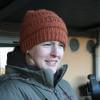
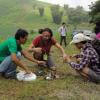
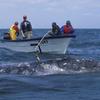


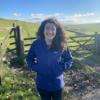



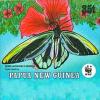

























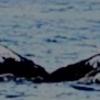















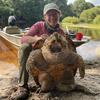



10 June 2025 6:04pm
Such a great case study!!